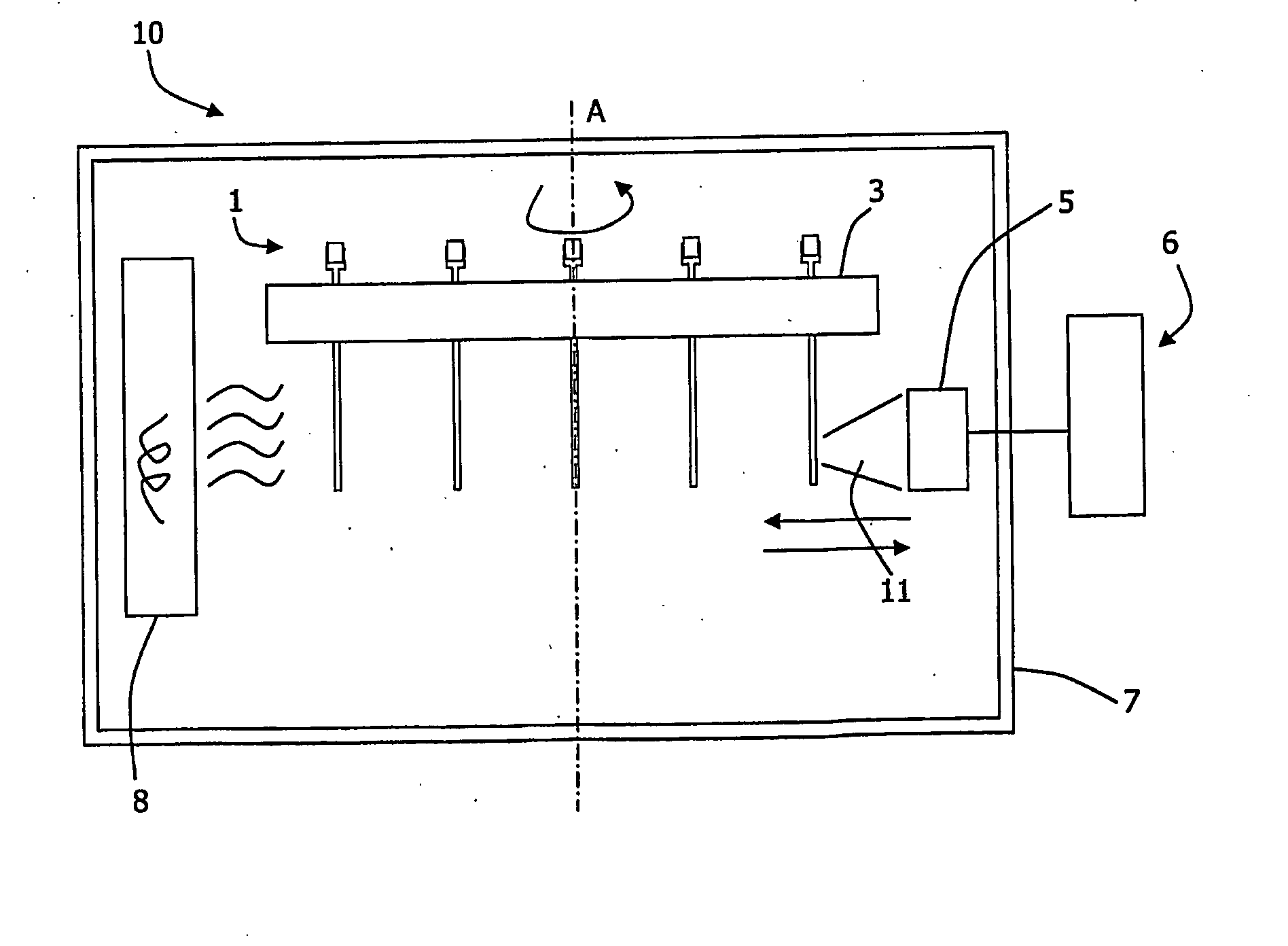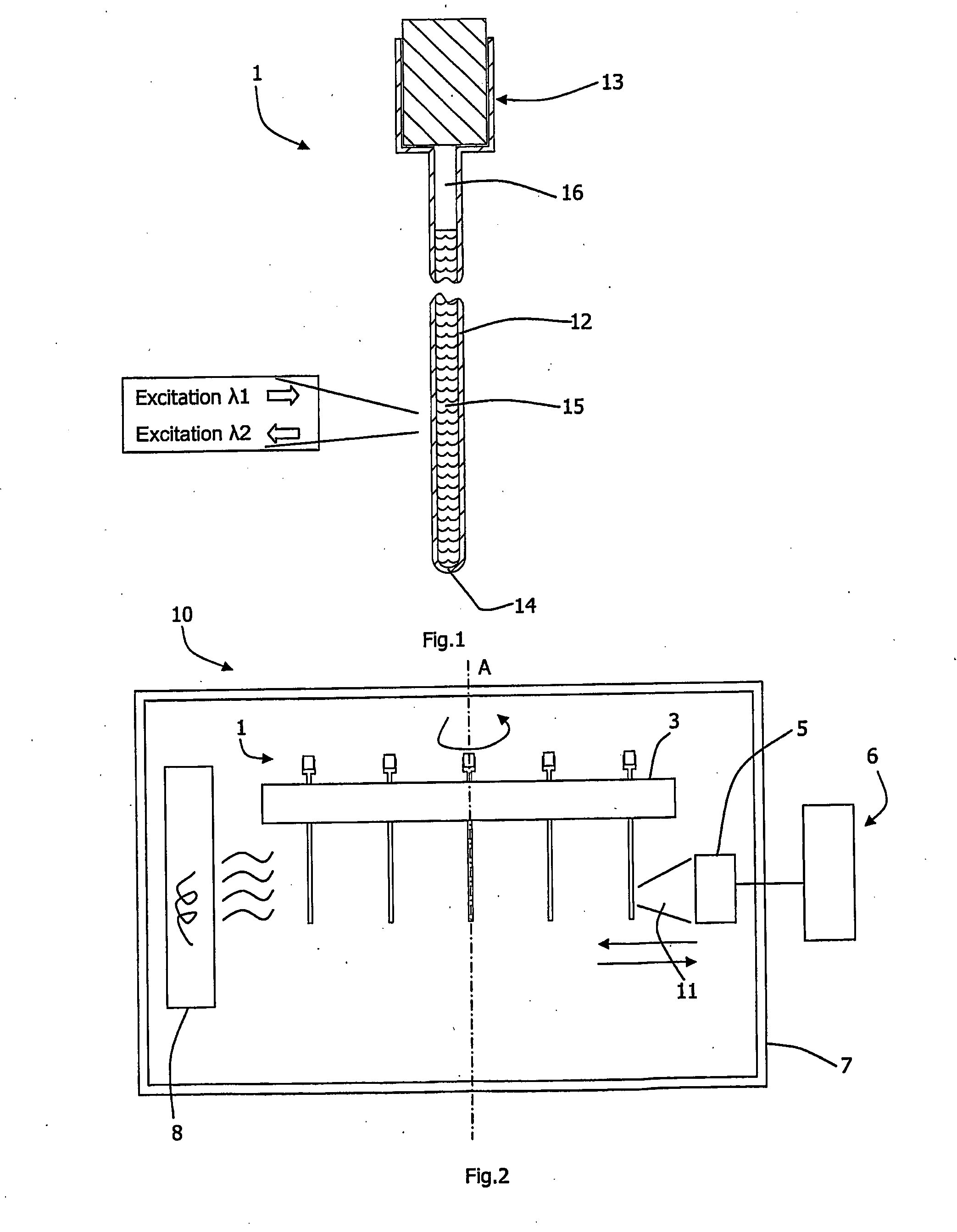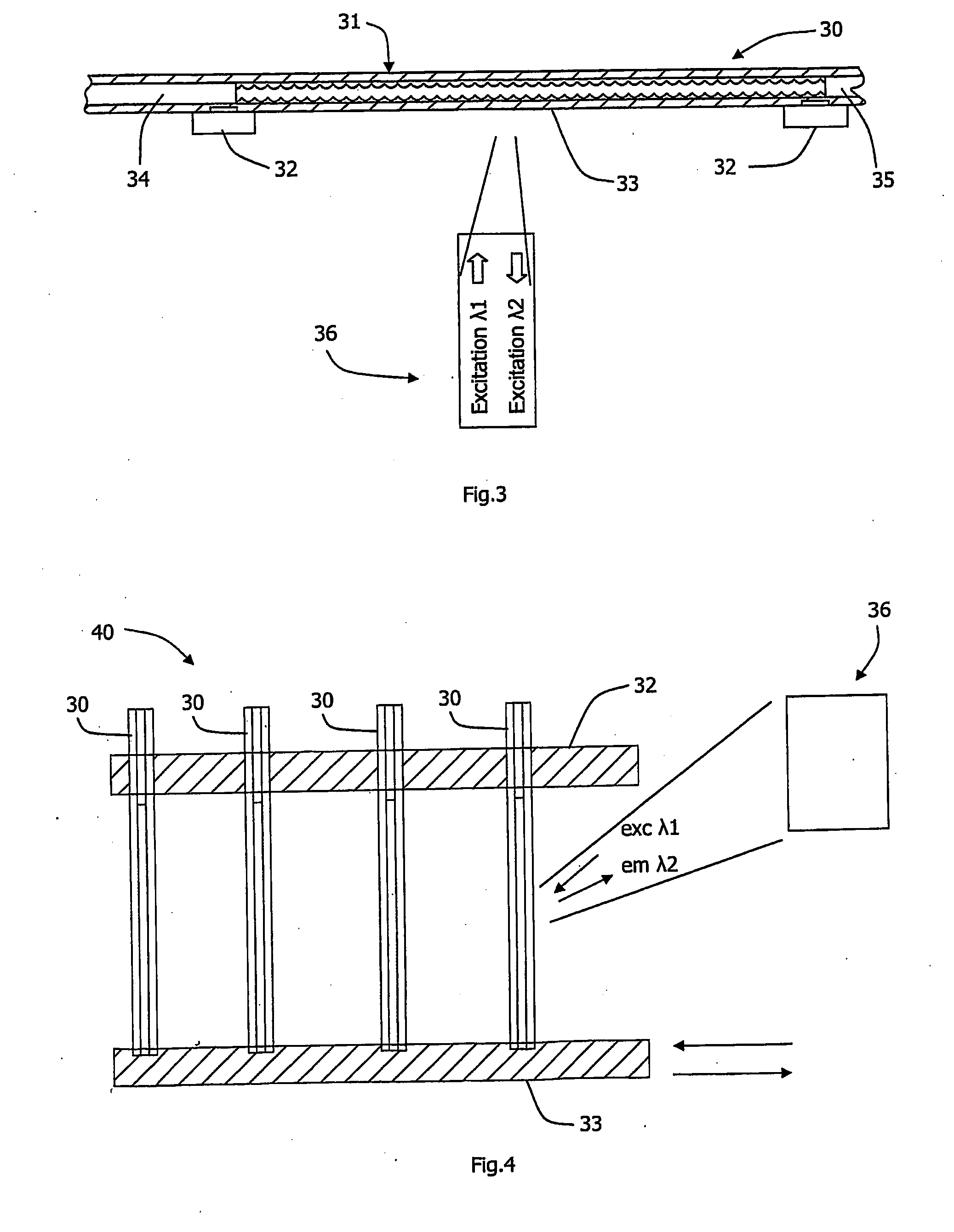Assessment of Biological or Chemical Samples
a biological or chemical sample and sample technology, applied in the field of biological or chemical sample assessment, can solve the problems of lack of sensitivity and accuracy of some methods, difficult application of this method to very small samples, etc., and achieve the effects of improving assay performance, reducing the number of samples, and increasing the oxygen gradien
- Summary
- Abstract
- Description
- Claims
- Application Information
AI Technical Summary
Benefits of technology
Problems solved by technology
Method used
Image
Examples
example 1
Preparation of Devices and Setting Up the Respirometric Experiment Using Water-Soluble Phosphorescent Oxygen Probes
[0122]The cuvettes 1 were used and the top of each capillary is attached to a plastic neck which serves as sample reservoir (accommodates ˜50 μl of liquid) and which is also used for capping the cuvette during the measurement experiment (caps are provided with capillaries).
[0123]To perform a respirometric experiment, test samples were pipetted in 50 μl aliquots into the wells of standard microtitter plate and mixed with 5 μl of a phosphorescent oxygen probe (type A65N, Luxcel Biosciences, 50 μM stock solution in water). 20 μl of these samples were pipetted into the wide part of the cuvette The cuvettes were then placed in a carousel in a LightCycler™ chamber, spun for ˜10 s at 5000 rpm on a centrifuge to bring the samples to the bottom of the cuvettes. After that the carousel was inserted into the LightCycler™ reader and fluorescent signals from capillaries with samples...
example 2
Preparation of Devices and Setting Up the Respirometric Experiment Using Solid-State Phosphorescent Oxygen Probes
[0125]For the fabrication of devices with embedded solid-state oxygen sensors and their use, a LightCycler™ and cuvettes of Example 1 were employed. Bottom parts of the cuvettes were pre-coated with the polymeric oxygen-sensitive phosphorescent coatings. The coating ‘cocktail’ was prepared by dissolving 1 mg of platinum(II)-octaethylporphine dye (PtOEP) in 1 ml of 10% solution of polystyrene (M.W. 230,000) in ethylacetate. 2 μl of this cocktail were applied to the bottom of each cuvette with a Pasteur pipette, and allowing to dry. After solvent evaporation, a thin film coating was produced which displayed strong phosphorescence and sensitivity to oxygen (2-3-fold signal enhancement upon deoxygenation of air-saturated aqueous samples). These cuvettes with the phosphorescent oxygen sensors were used in respirometric experiments in a similar way as those with the soluble oxy...
example 3
Preparation of Devices with the Particle-Based Oxygen Probe
[0126]The LightCycler™ system with cuvettes described in the Example 1 were employed, but in this case a microparticle-based phosphorescent oxygen-sensitive probe was incorporated in each of the cuvettes. The probe comprises an aqueous suspension of 3.3 μm monodispersed particles (1.5% w / w), which were made of polystyrene cross-linked with divinylbenzene and doped with PtOEK dye. Impregnation was achieved by incubating the particles in PtOEP solution in chloroform (10 mg / ml) for 24 h and then washing them with isopropanol, several times with ethanol and finally with water. A small volume (2-3 μl) of this suspension of microparticles was dispensed to the capillary cuvettes with a Pasteur pipette and then dried. Alternatively, the cuvette with liquid probe was capped and stored until further use.
[0127]Upon the addition of sample to such a cuvette, the particles produced phosphorescent signals detectable by the LightCycler™ rea...
PUM
 Login to View More
Login to View More Abstract
Description
Claims
Application Information
 Login to View More
Login to View More - R&D
- Intellectual Property
- Life Sciences
- Materials
- Tech Scout
- Unparalleled Data Quality
- Higher Quality Content
- 60% Fewer Hallucinations
Browse by: Latest US Patents, China's latest patents, Technical Efficacy Thesaurus, Application Domain, Technology Topic, Popular Technical Reports.
© 2025 PatSnap. All rights reserved.Legal|Privacy policy|Modern Slavery Act Transparency Statement|Sitemap|About US| Contact US: help@patsnap.com



